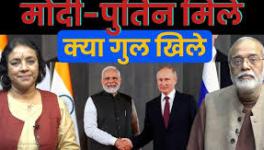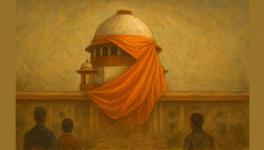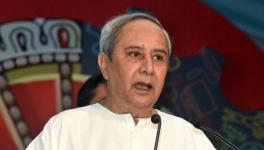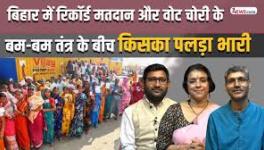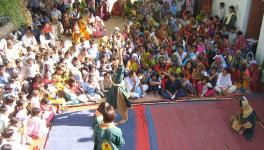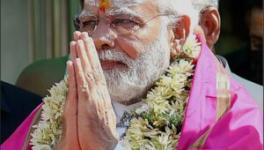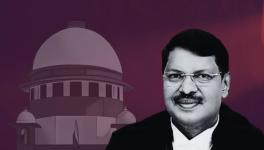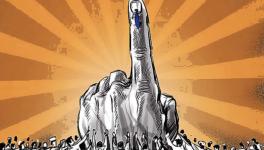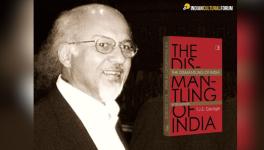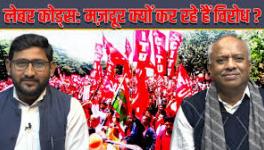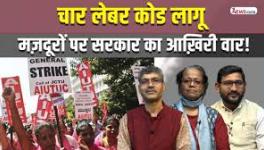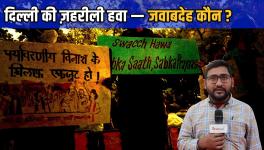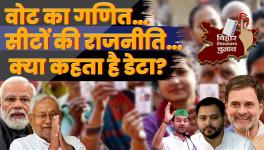WhatsApp Story That BJP Started Isn’t Finished Yet!
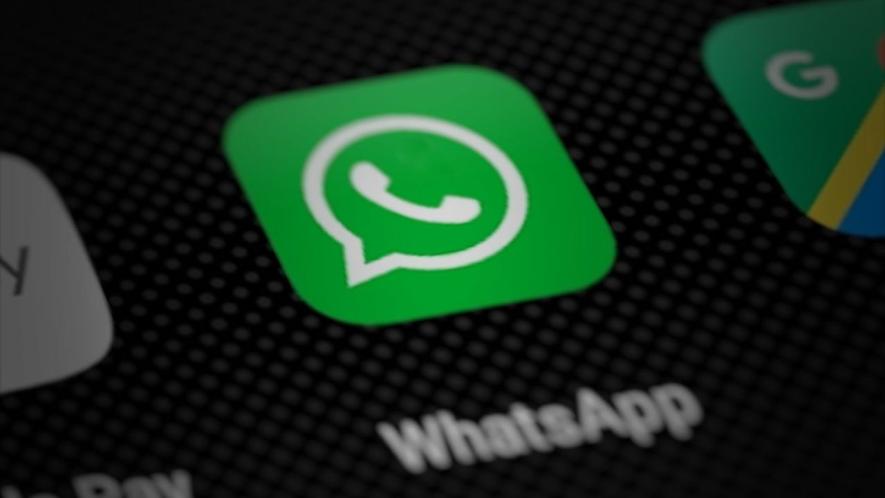
Image Courtesy: Flickr
Social media trends are often regarded as a barometer to gauge public opinion and popularity. This barometer has become so important that everyone, from companies to political parties to wealthy individuals, is shelling out big bucks on marketing and influencers to get noticed on platforms, such as Facebook, Instagram, WhatsApp, and YouTube. They are not even averse to using wild tactics, like deepfakes (fake and altered AI-generated pictures, videos, and voices) and message floods to grab attention, increase followers, and demolish opponents.
The importance of social media is visible in the meteoric rise of the global social media audience and the net worth of companies that own social media platforms, such as Meta, Alphabet, and X (formerly Twitter). (See graph 1 and 2)
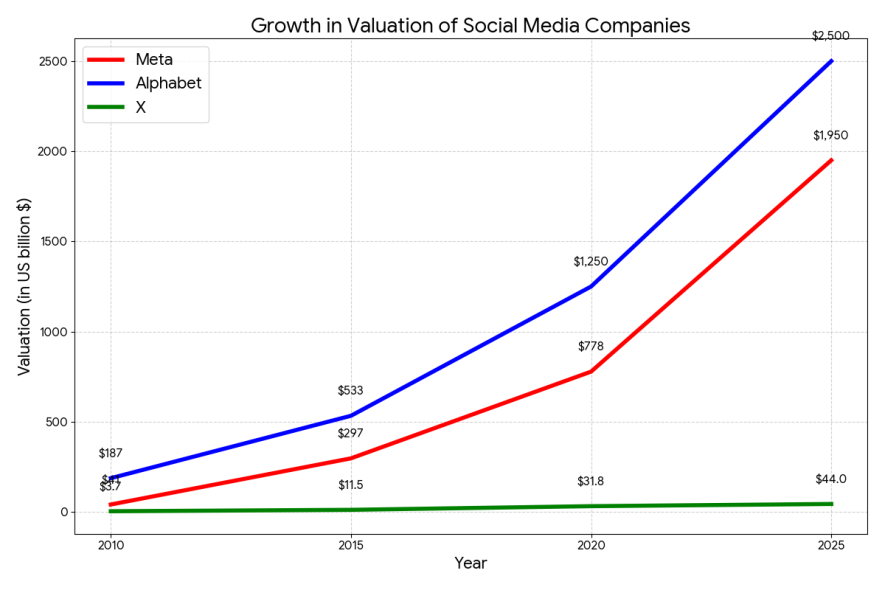
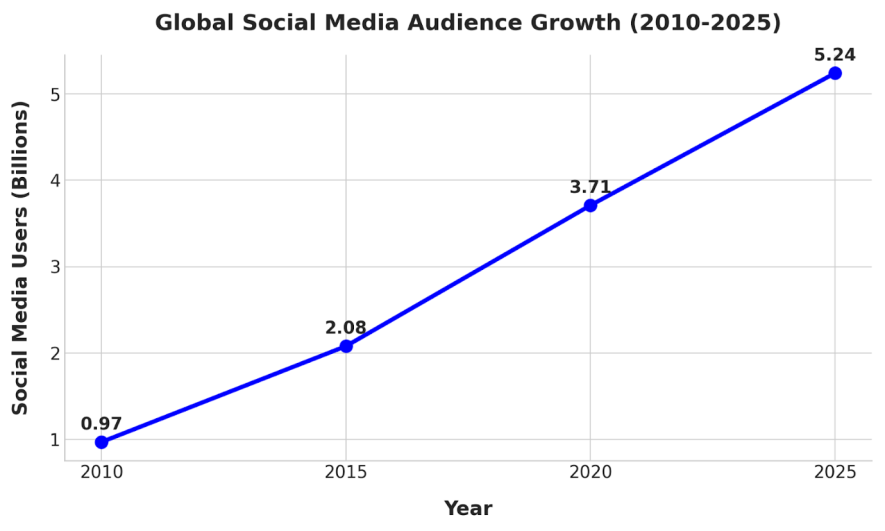
The growth of social media has been phenomenal in India since 2010. People glued to their social media on smartphones while travelling in Metro, buses, and the morning deluge of WhatsApp messages by senior citizens bear testimony to this growth, which, from 50, 70, and 10 million followers, respectively for WhatsApp, YouTube, and Instagram in 2014, grew to 535, 491, and 413 million in 2024.
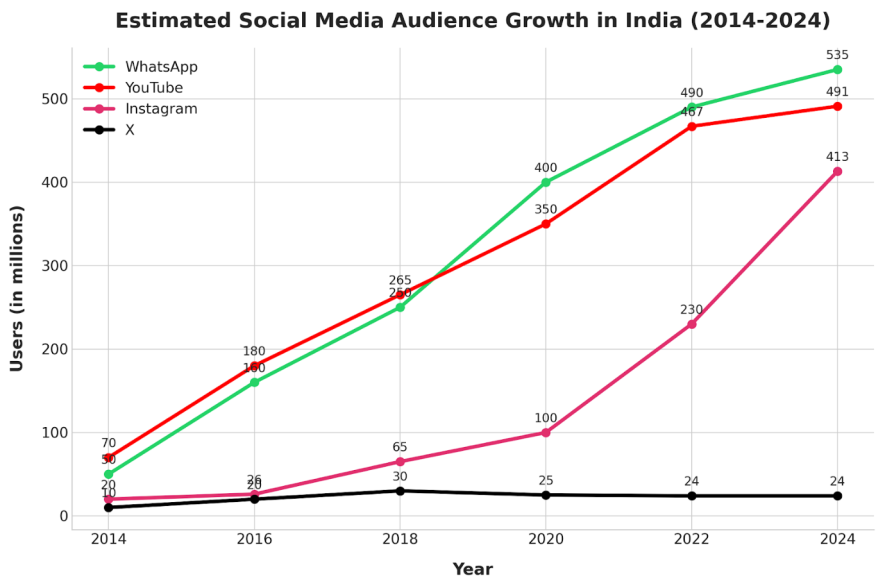
BJP: The Undisputed King of Social Media
Though traditional in approach, the ruling Bharatiya Janata Party (BJP) became the first political party to nail social media very early in India. Its IT cell kicked off in 2007, headed by Arvind Gupta, a Master’s in Computer Science from IIT-BHU. An ambitious Narendra Modi, as the Chief Minister of Gujarat, roped in Gupta, who started his YouTube channel in 2007. Two years later, in 2009, Modi created an X (formerly Twitter) handle and a Facebook page. In that era, these platforms were little-known entities in India.
No other Indian politician had understood the importance of social media apps like X, YouTube, and Facebook then. These platforms became central to Modi’s communication and a powerful tool for connecting with voters, especially from the urban middle and upper-middle class who took to social media early.
Following a dream victory in the 2014 general elections, often largely attributed to the “great marketing” of Modi (the then Gujarat Chief Minister), Amit Malviya took over BJP’s IT cell in 2015. With the help of Gupta, elevated as the National Technology Head to manage the party's overall digital media outreach, BJP and Prime Minister Modi achieved a formidable presence on social media.
In the following years, Modi's YouTube channel became a massive hit, gaining a subscriber base of 28.8 million and more than 7.56 billion views. His X handle and Facebook page also became a benchmark of popularity with millions of followers and fans. Currently, it has a follower base of 108 million and 50 million, respectively, including bots, as some studies suggest.
Malviya, who is very active on social media, especially X, isn't afraid to go hard on Opposition leaders. He is credited for ruthlessly attacking Opposition parties and its leaders especially Rahul Gandhi, Mamata Banerjee, and chief ministers of non-BJP state governments. He is also credited for taking BJP’s social media presence to unassailable heights, often by producing photoshopped and edited videos of Opposition leaders to put them in bad light.
Opposition Finally Wakes up!
The 2014 election results jolted the Indian National Congress when it slumped to its lowest tally ever (only 59 seats), and its vote share plunged to an abysmal 19.3%. Searching for answers, it established a Social Media Cell and appointed actor-turned-politician, Divya Spandana (Ramya) to steer its digital campaigns. Spandana made Congress’s messaging sharper and funnier, countered trolls, and worked on the personal branding of the party’s face, Rahul Gandhi, who finally joined X in 2015, years after Modi.
Following the party’s disastrous performance in the 2017 Uttar Pradesh elections and then in the 2019 general elections, Rohan Gupta was appointed as chairperson of the social media department in September 2019, who proved to be lacklustre and later a turncoat.
Supriya Shrinate, a former journalist, was appointed as the chairperson of the Congress' social media and digital platforms wing in 2022. She currently holds this position. A quick wit and social media savvy, Shrinate doesn’t shy away from responding to BJP’s social media attacks in equally savage language.
Most other Opposition parties, except Dravida Munnetra Kazhgham (DMK), Aam Aadmi Party (AAP), and CPIML Liberation, who joined X in 2011, 2012, and 2013, respectively, were also slow to start the digital push. The INDIA bloc parties, Samajwadi Party, Rashtriya Janata Dal and CPI (M) started earnestly adapting to social media in 2017. Although vibrant now, they still have a wide gap to counter BJP, which has put massive resources into social media for over 15 years.
Bharat Jodo Yatra, a game-changer
This 40,00-kilometre march by Rahul Gandhi greatly helped Congress connect with people and set its own narrative online. It posted Instagram reels and live updates to project a more human side of Rahul Gandhi to build a personal connection with a wider audience.
This gave Congress the opportunity, for the first time, to effectively set its own narrative by focusing on issues like economic inequality, social harmony, and the struggles of ordinary people, often successfully dominating online conversations and countering the BJP's narrative.
Before the 2024 general elections, Congress, embraced nearly all social media platforms and employed a multi-pronged digital strategy to amplify "Paanch Nyay" (Five Guarantees), to publicise and explain its key manifesto promises, its accounts began to prioritise engagement (likes, shares, views) over just follower count, which proved to be a successful metric in terms of online reach.
Today, Congress’s penetration has become stronger than BJP's on YouTube (6.62 million versus 6.25 million) and Instagram (9.6 million versus 8.3 million). In the majority of posts on Instagram and YouTube, the Congress has taken a lead in likes and shares.
On X, Congress has far less penetration with 11.5 million followers compared with BJP’s 23.2 million, yet most of its posts outsmart the BJP’s in likes and shares. Similarly, Rahul Gandhi’s personal X and Instagram accounts have fewer followers than Modi, but the likes and shares of his tweets and reels have started matching PM Modi’s reach.
The BJP’s main Facebook page has 17 million followers compared with Congress’s 8.1 million, yet BJP’s latest Facebook posts have fewer views than the Congress page.
The Congress has also overtaken BJP on YouTube with a subscriber base of 6.62 million, 49,778 videos and over 3.37 billion views. Rahul Gandhi’s YouTube channel, that was started in August 2017, a decade later than PM Modi’s, has made rapid progress to reach a subscriber base of 9.74 million, 3,267 videos and 2.68 billion views.
On Instagram, the most popular app among youth, Congress has a clear edge over BJP in terms of number of followers, posts, and views. Despite having only 11.5 million followers against Modi’s 96.7 million followers, Rahul Gandhi has edged past in the number of posts and views due to vibrant posts under sub heads like ‘Vote Chori’, ‘Buch Stops Here’ (a spoof on former SEBI chairperson, Madhabi Puri Buch who remains in controversy due to allegations of favouring Adani and personal fraud), ‘Vichardhara, Nyay, Bharat Jodo, Mohabbat Ki Dukaan, Zindagi Mubarak, and the 2024 LS Campaign.
WhatsApp, Facebook: BJP's Secret Weapons
These two social media platforms owned by Modi’s “friend” Mark Zuckerberg remain a formidable challenge for the Opposition to conquer. BJP has been using WhatsApp and Facebook for huge campaigns since 2014, and by 2019, it was dubbed as the "WhatsApp election."
It has got a massive network, with millions of WhatsApp groups, spreading info and propaganda, even if it's "sweet or sour, true or fake." Reports indicate that the party's IT cell was managing over 50 lakh (5 million) WhatsApp groups to disseminate poll-related information, propaganda to create a bigger-than-life image of Modi, and to discredit Opposition parties and leaders, particularly projecting Congress leader Rahul Gandhi as a dumb “Pappu”.
According to a BBC report, BJP, equipped with a massive army of volunteers, targeted one lakh to 1.5 lakh new voters every day during the run-up to the 2024 general elections.
WhatsApp serves as a crucial element of the BJP’s digital strategy, allowing it to rapidly transmit messages from the party's central command to any remote location across the country. The party's goal is to have groups at every level, from the state down to the polling booth, with plans to have three WhatsApp groups for each of India's more than 900,000 polling booths.
Insiders within BJP, on the condition of anonymity, claim that it would have been impossible for Modi to become the Prime Minister without the colossal marketing campaigns on these social media platforms.
Modi’s ‘Man Friday’, Union Home Minister Amit Shah, unabashedly attributed the biggest reason for the party's victory to the cyber warriors in his address to BJP’s social media volunteers in Kota, Rajasthan, on September 9, 2018.
He narrated a story of a BJP worker circulating fake news of Akhilesh Yadav (Samjawadi Party leader) slapping his father, Mulayam Singh. Shah went on to say that this is something worth doing but shouldn’t be done. “Yeh karne jaise kaam hai magar karna mat! Acha kaam bhi kar sakte hain. Hum jo chaahein woh sandesh janta tak pahuncha saktey hain, chaahe khatta ho ya meetha ho, sacha ho ya jhoota ho.” (We are capable of delivering any message we want to the public, whether sweet or sour, true or fake.”) The message with a clever caveat was transmitted among the rank and file of BJP cyber warriors.
An apt example of such photoshopped fakery can be seen in a social media post that BJP used in the run-up to the 2014 elections in which Modi was showcased as sweeping the floor during a BJP rally in 1988 to hammer his humble beginnings. But a RTI (Right to Information) query in January 2014 revealed that it was a photoshopped image.
India Today magazine wrote a scathing report in 2016 (which still exists) exposing this along with many such fake photoshopped posts in July 2014 but the damage was done by then. This tendency to hand out such fake images and messages to people hasn’t ebbed since, and gathers more steam during every election.
According to a report by The Washington Post, about 150,000 social media workers spread posts aimed at exploiting the fears of India's Hindu majority across a vast network of WhatsApp groups.
BJP insiders claim that the party’s IT cell creates messages that are circulated at various levels of the social, cultural, and economic hierarchy among educated urban middle-class living in metros, tier-one cities, mufassil towns, and villages. The message aims to hit the recipient's raw nerve, direct antagonism toward the targeted party or individual, and portray BJP and Modi as their ‘Messiah’.
For example, an edited viral speech of Rahul Gandhi in which he is shown saying, “I’ll make such a machine that the farmers will put potatoes at one end and gold will come out from the other end.” This message, though demolished by several fact checks, including ABP channel, considered pro-BJP, is still doing the rounds. Ironically, PM Modi himself has used it to take jibes against Gandhi on several occasions despite knowing that Gandhi had attributed this to him.
Fightback There, But Needs More Oomph
BJP’s WhatsApp, often referred to as the WhatsApp University, has started taking a hit as people who have not fallen prey to ‘collective stupidity’ have started answering back BJP supporters on chat groups. The arrival of fact- checkers like Alt News, Boom Live, Fact Crescendo, Factly, FactChecker.in, Newschecker, Newsmobile, The Healthy Indian Project (THIP), and The Quint - WebQoof, is helping demolish the web of misinformation.
A proactive approach adopted by the Opposition parties to immediately rebut and push their stories is also working. Yet, these efforts require far greater augmentation to counter the myth that BJP has created by pumping huge resources in terms of manpower and money for nearly two decades.
The writer is a senior independent journalist based in Delhi. The views are personal.
Get the latest reports & analysis with people's perspective on Protests, movements & deep analytical videos, discussions of the current affairs in your Telegram app. Subscribe to NewsClick's Telegram channel & get Real-Time updates on stories, as they get published on our website.









